
IEEE floating point representation
.pdf
IEEE Floating Point Representation
The 60's & 70's had di erent floating point systems. e.g. IBM 360/370 had numbers
±m × 16E , i.e. hexadecimal base.
Through the e orts of W. Kahan & others, a binary floating point standard was developed, and followed e.g. by Intel and Motorola:
IEEE floating point standard (ANSI/IEEE Std 754-1985).
We write IEEE FPS or FPA .
Three important requirements:
•consistent representation of
floating point numbers across machines
•correctly rounded arithmetic
•consistent and sensible treatment of exceptional situations (e.g. division by 0).
1

Normalized Numbers
We normalized nonzero numbers thus: x = m × 2E , where 1 ≤ m < 2, i.e.
m = (b0.b1b2b3 . . .)2, with b0 = 1.
Since we know this bit is 1, it need not be stored. So use 23 bits of the signi cand eld to store b1, b2, . . . , b23 instead of b0, b1, . . . , b22, changing precision from = 2−22 to
= 2−23 . The stored bitstring is now the fractional part of the signi cand, referred to as the fraction eld. Given a string of bits in the fraction eld, it is necessary to imagine that the symbols \1." appear in front, called hidden bit normalization.
Note: A pattern of all zeros in the fractioneld of a normalized number represents the signi cand 1.0, not 0.0, so:
zero will have to be a special number
2

Special Numbers:
Another special number is the number ∞. This allows e.g. 1.0/0.0 → ∞, instead of terminating with an overflow message.
What about −∞?
Have −∞ as well as ∞ and −0 as well as 0, where −0 and 0 are two di erent representations for the same value, while −∞ and
∞ represent two very di erent numbers.
Another special number is NaN, or
\Not a Number", and is an error pattern.
All special numbers, including
subnormal numbers, are represented by a
special bit pattern in the exponent eld. |
|
. |
. |
There are 3 standard types in IEEE FPA: single, double, and extended precision.
Single precision numbers use 32-bit words
3
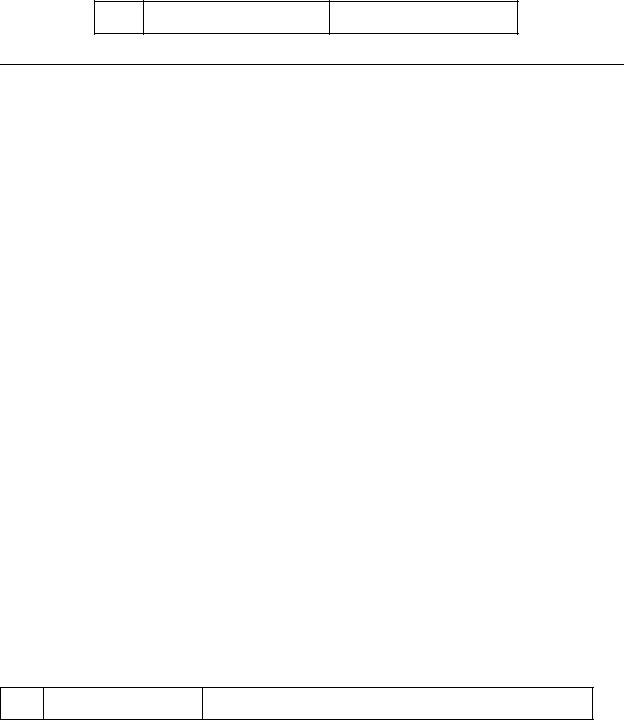
Table 1: IEEE Single Precision
±a1a2a3 . . . a8 b1b2b3 . . . b23
If exponent a1 . . . a8 is |
Then value is |
|
|
(00000000)2 = (0)10 |
±(0.b1..b23)2 × 2−126 |
(00000001)2 = (1)10 |
±(1.b1..b23)2 × 2−126 |
(00000010)2 = (2)10 |
±(1.b1..b23)2 × 2−125 |
(00000011)2 = (3)10 |
±(1.b1..b23)2 × 2−124 |
↓ |
↓ |
(01111111)2 = (127)10 |
±(1.b1..b23)2 × 20 |
(10000000)2 = (128)10 |
±(1.b1..b23)2 × 21 |
↓ |
↓ |
(11111100)2 = (252)10 |
±(1.b1..b23)2 × 2125 |
(11111101)2 = (253)10 |
±(1.b1..b23)2 × 2126 |
(11111110)2 = (254)10 |
±(1.b1..b23)2 × 2127 |
(11111111)2 = (255)10 |
±∞ if b1, , b23 = 0; |
|
NaN otherwise. |
|
|
The ± refers to the sign, 0 for positive. Line 1 shows zero requires a zero bitstring for the exponent eld as well as for the fraction:
0 00000000 0000000000000000000000
Initial unstored bit is 0, not 1, in line 1.
4
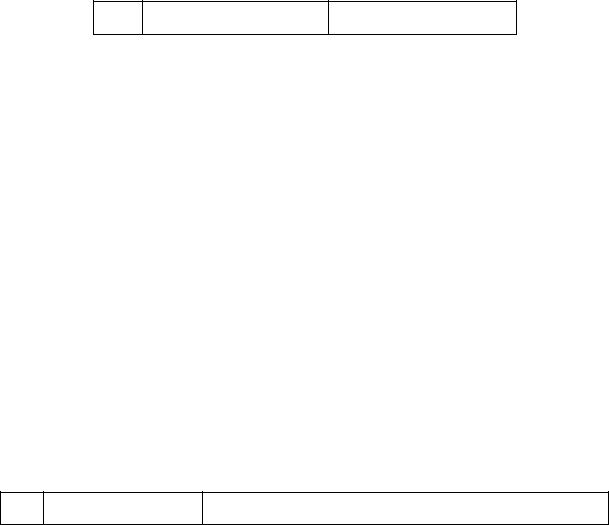
IEEE Single Precision, ctd.
±a1a2a3 . . . a8 b1b2b3 . . . b23
If exponent is zero, but fraction is nonzero, the number represented is subnormal.
All lines except the rst and the last refer to the normalized numbers, i.e. all the numbers which are not special.
The exponent representation a1a2 . . . a8 uses biased representation: this bitstring is the binary representation of E + 127.
(127 is the exponent bias).
e.g. 1 = (1.000 . . . 0)2 × 20 is stored as
0 01111111 00000000000000000000000
The exponent bitstring is (binary) 0+127 and the fraction is 0 (the fractional part of 1.0).
Q: How is 32. = (1.0)2 × 25 stored ??
0 |
10000100 |
0000000000000000000000 |
|
|
|
5
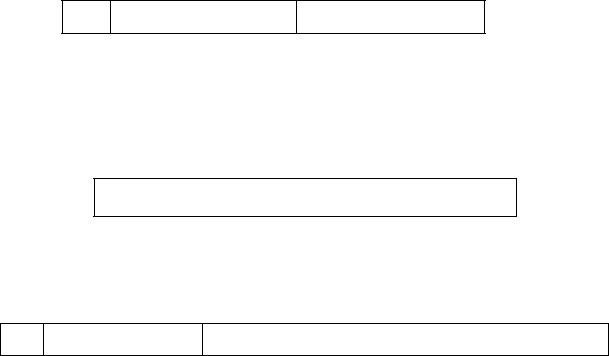
±a1a2a3 . . . a8 b1b2b3 . . . b23 ctd.
Exponent range for normalized numbers is 00000001 to 11111110 (1 to 254), representing actual exponents
Emin = −126 to Emax = 127
The smallest normalized number which can be stored is (1.000 . . . 0)2 × 2−126:
0 00000001 00000000000000000000000
approximately 1.2 × 10−38. The largest normalized number is (1.111 . . . 1)2 × 2127,
0 |
11111110 |
11111111111111111111111 |
|
|||
|
|
|
|
|
|
|
approximately 3.4 × 1038. |
|
|
||||
|
|
|
|
|
||
|
|
|
|
|
||
|
If exponent a1 . . . a8 is |
|
Then value is |
|
||
|
|
|
||||
|
(11111111)2 = (255)10 |
|
±∞ if b1, , b23 = 0; |
|
||
|
|
|
|
|
NaN otherwise |
|
|
|
|
|
|
|
|
This last line shows an exponent bitstring of all ones is a special pattern for ±∞ and
NaN, depending on the value of the fraction.
6
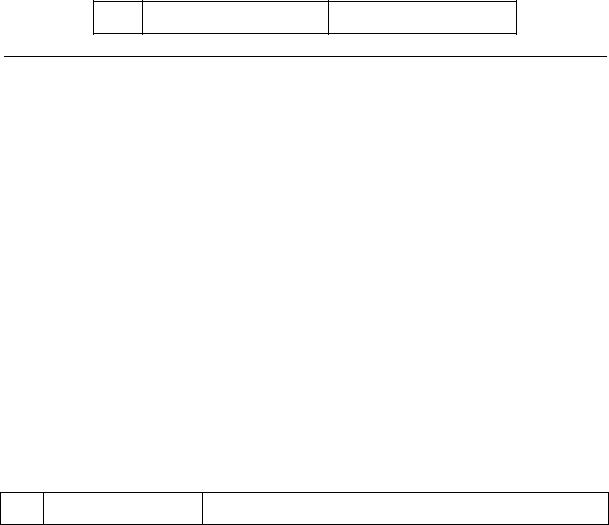
IEEE Single Precision, ctd.
±a1a2a3 . . . a8 b1b2b3 . . . b23
If exponent a1..a8 is |
Then value is |
|
|
(00..00)2 = (0)10 |
±(0.b1..b23)2 × 2−126 |
|
|
The idea of the 1st line is although 2−126 is the smallest normalized number, we can represent smaller numbers called subnormal numbers. e.g. 2−127 = (0.1)2 × 2−126, as
0 |
00000000 |
10000000000000000000000 |
|
|
|
and 2−149 = (0.0000 . . . 01)2 × 2−126
(with 22 zero bits after the binary point) as 0 00000000 00000000000000000000001
the smallest nonzero number we can store. The 2−126 in the rst line allows us numbers
below the smallest normalized number. (Subnormal numbers cannot be normalized, as this gives exponents which do not t).
7
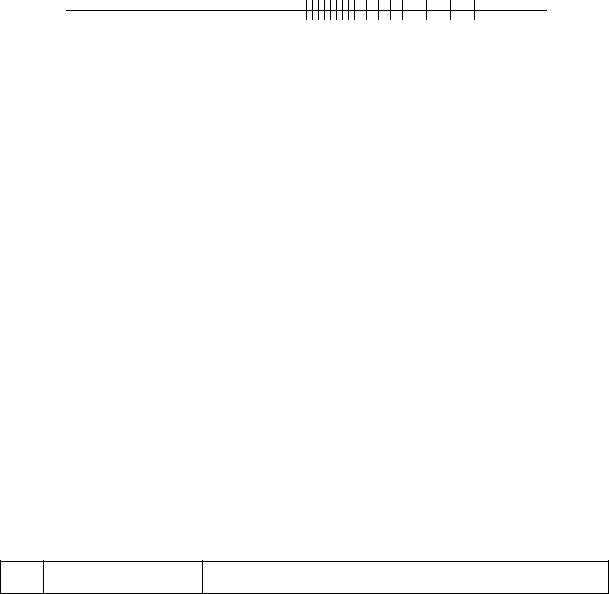
The Toy System, ctd.
Signi cand b0.b1b2, exponent E {−1, 0, 1}:
|
- |
. . . . . .0 1 2 3
The Toy System, with Subnormal Numbers.
We get three extra numbers: (0.11)2 × 2−1, (0.10)2 × 2−1 and (0.01)2 × 2−1. The gap
between 0 and the smallest positive normalized number is lled in by the subnormal numbers, (same spacing as for normalized numbers with exponent −1)
IEEE Single Precision, ctd.
Subnormal numbers are less accurate, (less room for nonzero bits in the fraction). e.g. (1/10) × 2−133 = (0.11001100 . . .)2 × 2−136 is
0 00000000 00000000001100110011001
8

IEEE Double Precision
2nd Format: Each double precision floating point number is stored in a 64-bit double word. Ideas the same; eld widths (11 & 52) and exponent bias (1023) di erent. b1, . ., b52 can be stored instead of b1, . ., b23.
Table 2: IEEE Double Precision
±a1a2a3 . . . a11 b1b2b3 . . . b52
If exponent is a1..a11 |
Then value is |
|
|
(000..0000)2 = (0)10 |
±(0.b1..b52)2 × 2−1022 |
(000..0001)2 = (1)10 |
±(1.b1..b52)2 × 2−1022 |
(000..0010)2 = (2)10 |
±(1.b1..b52)2 × 2−1021 |
(000..0011)2 = (3)10 |
±(1.b1..b52)2 × 2−1020 |
↓ |
↓ |
(01..111)2 = (1023)10 |
±(1.b1..b52)2 × 20 |
(10..000)2 = (1024)10 |
±(1.b1..b52)2 × 21 |
↓ |
↓ |
(11..100)2 = (2044)10 |
±(1.b1..b52)2 × 21021 |
(11..101)2 = (2045)10 |
±(1.b1..b52)2 × 21022 |
(11..110)2 = (2046)10 |
±(1.b1..b52)2 × 21023 |
(11..111)2 = (2047)10 |
±∞ if b1, , b52 = 0; |
|
NaN otherwise |
|
|
9
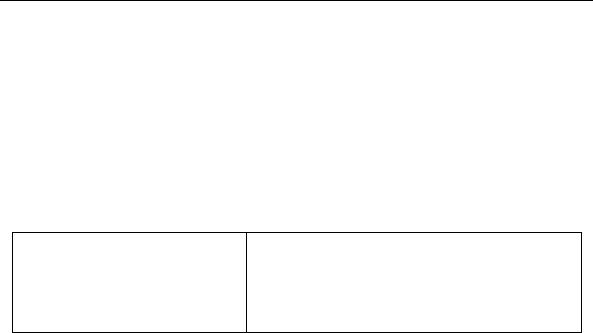
Extended precision, the third format, is usually an 80-bit word, with 1 bit sign, 15 bit exponent and 64 bit signi cand, with leading bit of a normalized number not hidden.
. .
We see that the rst single precision number larger than 1 is 1+2−23, while the rst double precision number larger than 1 is 1 + 2−52.
Table 3: What is that Precision?
IEEE Single = 2−23 ≈ 1.2 × 10−7 IEEE Double = 2−52 ≈ 1.1 × 10−16 IEEE Extended = 2−63 ≈ 1.1 × 10−19
The fraction of a single precision normalized number has exactly 23 bits of accuracy. This corresponds to approximately 7 decimal digits of accuracy. In double precision, the fraction has exactly 52 bits of accuracy. This corresponds to approximately 16 decimal digits of accuracy.
10
